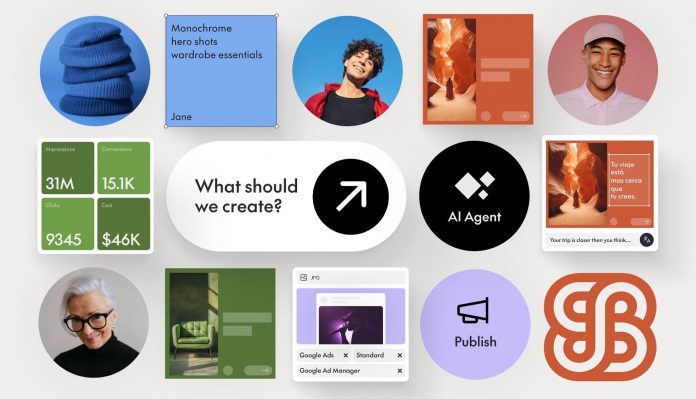In today’s marketing tech landscape, the worst enemy of speed is context loss. You might start with an insight tool, export to design, upload to ad platforms, and then download analytics. Each step invites friction, mistakes, and wasted time. The Brief AI Agency aims to change that by replacing disconnected point tools with a unified agentic system that coordinates strategizing, creation, deployment, and optimization as one continuous experience.
Here’s why savvy marketing teams are beginning to choose The Brief over a patchwork of tools, and what evidence supports their choice.
The Burden Of Tool Proliferation And Fragmentation
Most marketing stacks today look like overstuffed toolkits. Recent industry data shows that around 78% of global companies are using AI in at least one business function, yet many still struggle with integration across departments and platforms. At the same time, the global AI market is under heavy pressure to scale: a Forbes survey projected hundreds of millions of users and a market value in the hundreds of billions of dollars by 2025.
The result: despite AI features proliferating in tools, the coordination between them often remains weak. Many marketers tell the same story: “We have a dozen tools, each promising to do part of the job. The integrations never fully work. We lose brand consistency, versioning, data context, and speed.”
That’s the void The Brief targets: not just automation, but orchestration.
How The Brief Unifies Strategy, Creation & Execution
Based on its public documentation and brand messaging, The Brief’s system is organized around a loop of AI agents: Discover → Create → Launch → Optimize. Each agent has a distinct domain, but their shared context makes them act more as a unified organism than disjoint modules.
- Discover: Analyzes competitive creatives, trend signals, campaign angles, and helps build moodboards or insight briefs.
- Create: Generates assets (images, copy, video cuts), resizes formats, and enables direct editing within the system under brand guardrails.
- Launch: Automates deployment to ad networks (Meta, Google, etc.), handles compliance checks, and dynamic formatting.
- Optimize: Ingests performance data, surfaces signals, recommends or iterates creative variants, and loops ideas back to Create or Discover.
Because these agents share memory and context, the system avoids the “lost in translation” handoffs that plague traditional stacks. Early pilot programs show promising outcomes: campaign launches are completed up to 90% faster, and operational costs are reduced by roughly 35%. These results underscore how The Brief’s agentic architecture can deliver measurable efficiency and agility for marketing teams seeking smarter orchestration rather than more tools. This shift, from isolated tools to an internal communication network, is the real value proposition.
Evidence & Innovation: Data That Reinforces The Brief’s Approach
The success of The Brief AI Agency aligns with a clear industry shift toward intelligent orchestration, where connected systems outperform isolated tools. A recent Boston Consulting Group study found that organizations using integrated AI frameworks, rather than standalone applications, were five times more likely to report measurable business value. This reflects precisely the kind of structural design The Brief brings to marketing operations: connected intelligence rather than scattered automation.
In parallel, Forbes notes that AI in marketing is rapidly evolving from tactical automation to strategic co-creation, where systems like The Brief assist in both ideation and execution. This trend underscores why marketers are moving away from siloed tools; they need collaboration, not fragmentation.
As Forbes further explains, the real ROI in AI comes from “solving real problems with clean, context-rich data.” That’s the core of The Brief’s advantage: every agent in its loop shares context, ensuring clean data flow and consistent decision-making across the campaign lifecycle.
Even as researchers explore bias and ethics in large-language-model marketing, The Brief’s human-in-the-loop oversight helps maintain creative diversity and brand safety, merging machine precision with human discernment.
Together, these insights reveal why marketers are choosing The Brief. It’s not just another AI tool, but an orchestrated system that turns complexity into cohesion and ideas into intelligent action.
How To Pilot The Brief In A Real Enterprise Environment
It’s tempting to flip the switch and let the AI run wild. But good pilots often follow these guidelines:
- Start in one channel (e.g., Facebook Ads or Google) with a bounded use case (e.g., lead acquisition).
- Set governance layers. Humans should review the first iterations to catch tone or bias slips.
- Compare results against the traditional tool stack (A/B test) to validate lift.
- Watch for failure modes like creative homogenization, overfitting to short-term signals, or attribution illusions.
- Scale gradually, monitor creative diversity, and ensure data flows remain clean as complexity grows.
If a pilot succeeds under those constraints, the case for full adoption becomes much stronger.
Why Marketers Are Choosing The Brief
Given the messy state of tool ecosystems, here’s why The Brief is earning attention:
- Reduced Context Loss & Fewer Handovers
When tools are stitched together, context tends to erode, brand style slips, data attribution breaks, and version control collapses. The Brief internalizes handoffs.
- Faster Iteration Cycles
The loop means creative feedback, performance insights, and variant generation can all feed one another natively, eliminating the need for CSV exports, uploads, or alignment meetings.
- Better Attribution & Cross-Channel Insights
Because Optimize ingests data continuously across campaigns, it can detect cross-channel signals that siloed analytics may miss.
- Cost & Resource Efficiency
Although headline numbers like “–35% cost” should be tested carefully, early adopters expect fewer hours on operational grunt work and more focus on strategy.
- Scalability & Consistency
Instead of reinventing workflows for every campaign, The Brief is designed to carry forward learnings and brand memory across initiatives.
In effect, the promise is that marketing stops being a patchwork of tools and becomes an intelligent, self-correcting system.






